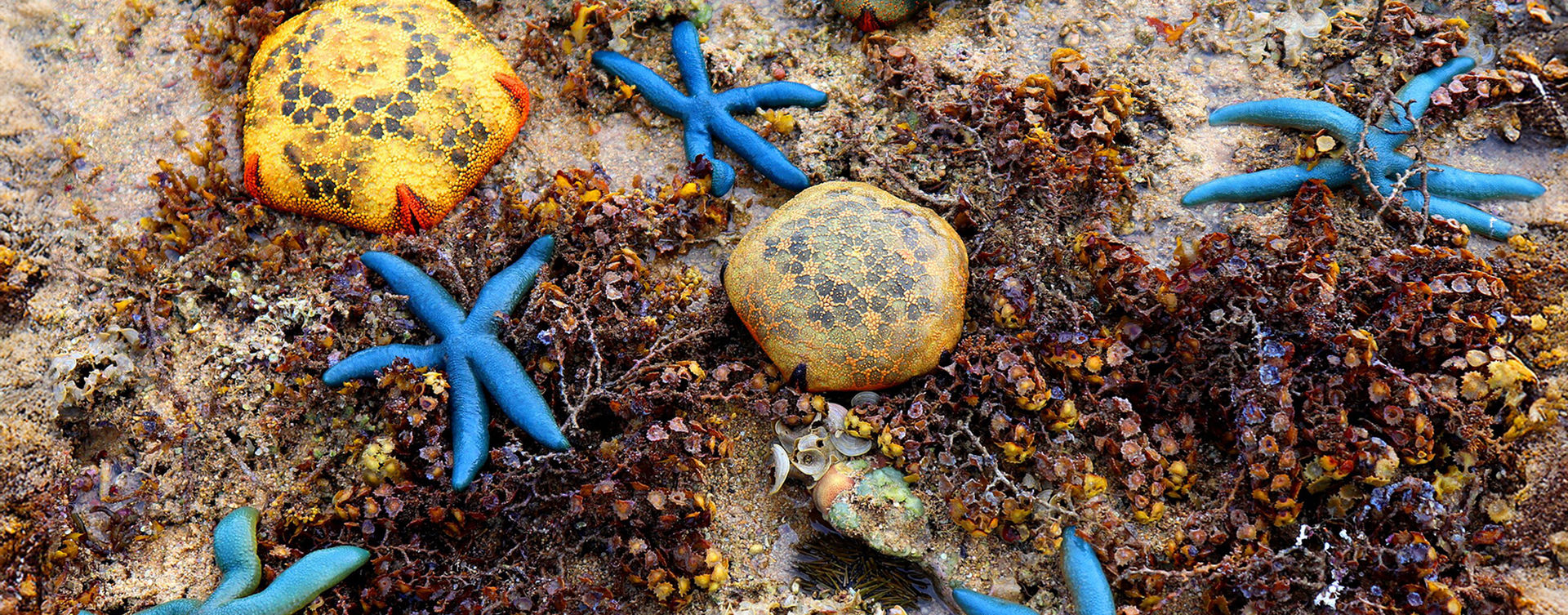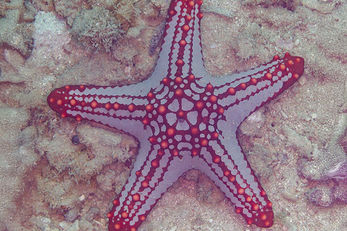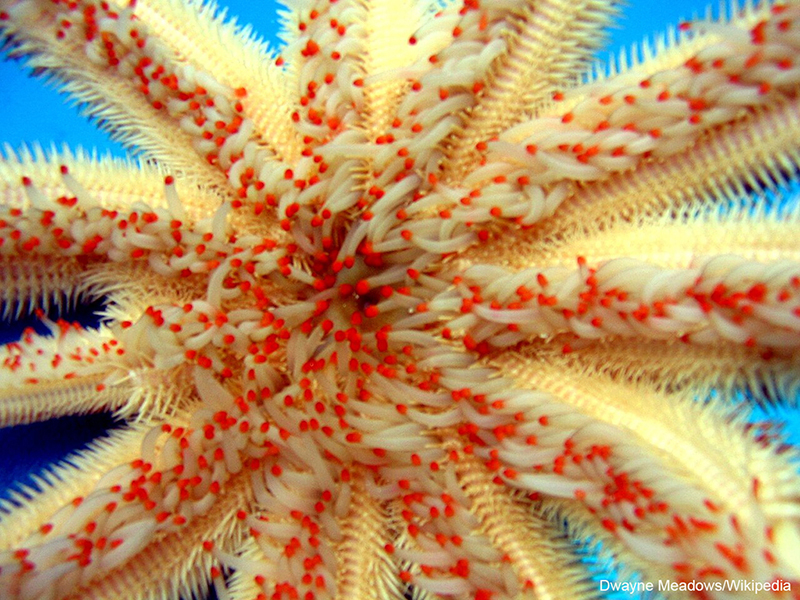
A Short Story on one of Earth’s Oldest Animals
Sometimes, simple is better. Case in point are the starfish – more correctly known as sea stars. These simple animals lack eyes to see an approaching threat, have no brain to think their way out of danger, no means of defense, and they couldn't outrun a snail.
And yet, Sea Stars have survived for more than 450 million years, outlasting the dinosaurs and countless other species on both land and sea. A number of factors contribute to this admirable longevity, and some of the most important are also the most unusual. Here are some of the adaptations that have kept these simple animals around for a very long time.

A Heartless Creature
If you cut a sea star, it won't bleed. Instead of a heart pumping blood through veins, their bodies are laced with an intricate network of canals that move water in and out. This natural hydraulic system is used to distribute nutrients, control movements of the arms and activate hundreds of small tentacle-like tube feet. They can turn off the internal pumps to go soft and squeeze into tight spaces, or increase the pressure to become rigid as a deterrent to would-be predators.

They Have The Stomach For It
Some species of sea stars can go six months without a meal. When food is available it is passed through two stomachs. The cardiac stomach, which starts the digestion process, and the pyloric stomach which finishes the job. The unusual aspect of this arrangement is the sea star's ability to push the cardiac stomach out of its feeding orifice and attach it to prey to soften things up before swallowing. This talent is particularly useful for species that feed on clams. The sea star will create a suction with its tube feet to grasp and open the oyster shell, then extend and insert their cardiac stomach into the victim.
A Growing Phenomenon
Should a toothy critter take a bite out of a sea star, it's usually not fatal, because sea stars can regrow missing body parts. This regenerative ability came as a surprise to fishermen who sought to rid their oyster beds of predatory sea stars by hacking them up and dumping the parts back overboard. Within a few months, the chopped-up stars regenerated, effectively quadrupling their numbers.

No Partner, No Problem
Male and female sea stars usually make babies by external fertilization, which involves a coordinated release of eggs and sperm into the water. In the absence of a partner, they will sometimes engage in asexual reproduction. This is an act of duplication when the animal splits itself in two and regrows each half as two new organisms. Sea stars can also clone themselves from a single detached arm, which, over time will regenerate an entirely new body.

Save the Stars
Sea stars have a long and admirable survival record, but many species now face unexpected threats from humans. These animals are harvested for food in some parts of the world, killed and preserved as souvenirs and captured for the aquarium trade.
A less obvious but potentially lethal threat takes place each time a swimmer or snorkeler grabs a sea star for a photo op. Rapidly exposing the animal to air may cause asphyxiation and damage its skin. Divers and swimmers can do their small but important part in saving sea stars by simply following a “look but don't touch policy.”
Image Credits: Header, FroyAgta/Wikipedia. 1, National Oceanic and Atmospheric Administration. 2, Diego Delso/Wikipedia. 3, Dwayne Meadows/Wikipedia. 4, RamgamaChada/Wikipedia.